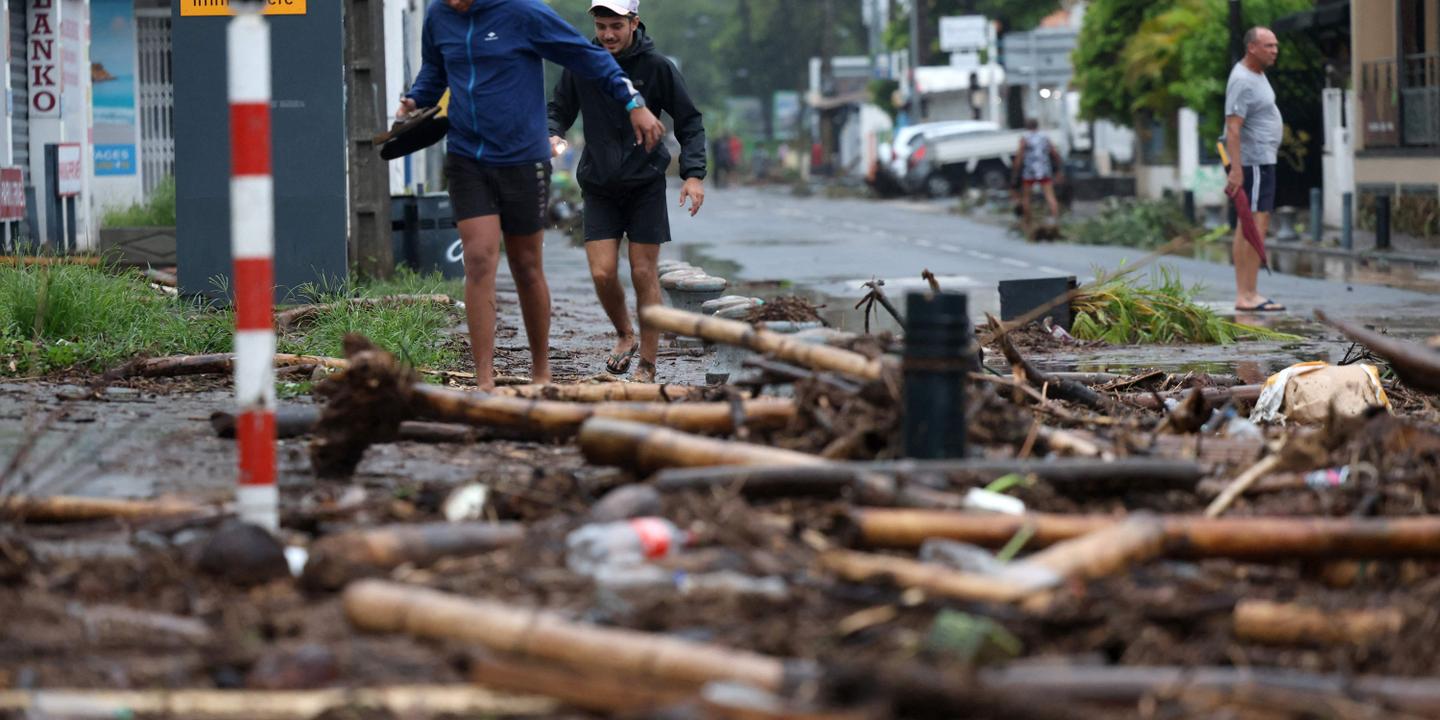
Devastation on La Réunion Island: Cyclone Leaves a Trail of Destruction and Loss
The French island of La Réunion, nestled in the Indian Ocean, is grappling with the aftermath of a brutal cyclone that has left a scar on its landscape and its people. Prefect Patrice Latron, the top state representative on the island, described the situation as "disfigured," painting a grim picture of uprooted trees, cars swept away by raging floodwaters, and widespread power and road disruptions. The "brutal and violent" cyclone, as Latron characterized it, has tragically claimed the lives of four individuals and left a significant portion of the island’s population without essential services.
The human cost of the cyclone is particularly heartbreaking. A woman in Saint-Denis, the island’s capital city, was swept away by the relentless floodwaters, a stark reminder of the cyclone’s raw power. In another tragic incident within the same commune, a man lost his life in an electrical fire sparked by the storm’s impact on infrastructure. The western commune of Trois-Bassins witnessed a devastating landslide, burying a woman under a torrent of mud and debris. The prefecture confirmed the fourth fatality on Saturday morning, reporting that a man in Saint-Denis was crushed under a fallen tree, highlighting the diverse and deadly ways in which the cyclone manifested its destructive force.
The eastern and northern regions of La Réunion bore the brunt of the cyclonic conditions, experiencing the most severe devastation. Wind speeds reached terrifying levels, tearing through vegetation and infrastructure alike. Torrential rainfall inundated the island, causing rivers to swell and overflow their banks, transforming familiar landscapes into treacherous waterways. The combination of wind and water created a chaotic environment that tested the resilience of both the island’s infrastructure and its inhabitants.
For a period of time, the island was placed under a "red alert," mandating that all residents remain confined to their homes for their safety. This measure, while necessary to protect lives, also served as a stark reminder of the imminent danger posed by the cyclone. The red alert was lifted at 10:00 AM local time on Saturday, a moment of relief for the island’s population, but the challenges of recovery were only just beginning.
As the immediate threat subsided, the scale of the disaster became clearer. Saturday morning brought with it reports that approximately 953 people were seeking shelter in emergency accommodation centers, having been displaced from their homes by the cyclone’s fury. A staggering 160,000 residents remained without electricity, plunging homes and businesses into darkness. The water supply was also severely disrupted, with over 310,000 inhabitants left without access to potable water, raising concerns about sanitation and public health. The island’s connectivity was also significantly impacted, with 139,000 people experiencing disruptions to their internet service, hindering communication and access to vital information.
The French government has pledged its support to La Réunion in the wake of this devastating event. Manuel Valls, the Minister for Overseas Territories, announced that he would be traveling to the island in the coming days to stand alongside the Réunionnais people and to collaborate with local authorities, including Prefect Latron and elected officials, to assess the damage and determine the necessary aid to facilitate recovery. Valls’ visit will be a crucial opportunity to understand the specific needs of the affected communities and to ensure that the government’s response is tailored to the unique challenges facing La Réunion.
In addition to financial assistance, the government is also deploying personnel and resources to assist with the recovery efforts. Bruno Retailleau, the Minister of the Interior, announced via social media that "two waves of reinforcements" consisting of firefighters and civil security personnel, are being dispatched from mainland France and the nearby island of Mayotte. These reinforcements will provide much-needed support to local emergency services, assisting with search and rescue operations, clearing debris, and restoring essential infrastructure. The arrival of these specialized teams will undoubtedly bolster the island’s capacity to respond to the crisis and accelerate the recovery process.
The road to recovery for La Réunion will be long and arduous. Rebuilding damaged infrastructure, restoring essential services, and providing support to those who have lost their homes and livelihoods will require a concerted effort from the government, local authorities, and the Réunionnais people themselves. The resilience and community spirit of the island’s inhabitants will be crucial in overcoming the challenges that lie ahead.
The immediate priority is to ensure that all residents have access to safe shelter, clean water, and adequate food supplies. Medical assistance and psychological support will also be essential in addressing the physical and emotional trauma caused by the cyclone. As the recovery process unfolds, it will be important to assess the island’s vulnerability to future extreme weather events and to implement measures to mitigate the impact of future cyclones. This may include strengthening infrastructure, improving early warning systems, and promoting sustainable land management practices.
The devastation on La Réunion serves as a stark reminder of the increasing frequency and intensity of extreme weather events around the world. As climate change continues to exacerbate these trends, it is imperative that governments and communities take proactive steps to prepare for and respond to these challenges. The experience of La Réunion provides valuable lessons for other island nations and coastal communities that are vulnerable to the impacts of climate change. The long-term recovery of La Réunion will require not only financial and material resources but also a commitment to building a more resilient and sustainable future for the island and its people.
